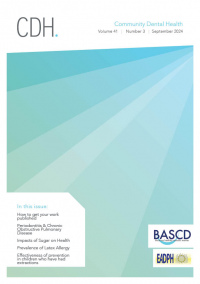Ethnic Inequalities in the Functional Dentition Among British Adults: A Multilevel Analysis
Ethnic Inequalities in the Functional Dentition Among British Adults: A Multilevel Analysis
Abstract
Objective: To explore the role of socioeconomic factors, area deprivation and behaviours in explaining ethnic differences in the functional dentition among East London adults using multilevel modelling. Methods: Data from a community-based health survey in East London included information on 1898 adults aged between 16 to 65 years old and belonging to 9 ethnic groups. Supervised questionnaires gathered information on demographic characteristics, socioeconomic indicators, dental behaviours and area deprivation (IMD 2007). A functional dentition was defined as having all 6 anterior plus at least 4 posterior contacts in clinical examination. Results: The multilevel logistic regression showed that Black Africans were 75% (95%CI: 1.21-2.52) and Black Caribbean 77% (95%CI: 1.05-2.98) more likely to have a non-functional dentition than White British participants in fully adjusted models. Other factors associated with a non-functional dentition were older age and no educational attainment. Conclusion: Black adults are at greater risk of non-functional dentition independently from sociodemographic characteristics, oral health-related behaviours and area-level characteristics. Proportionate universalism could be effective in reducing these health gaps. Keywords: functional dentition, ethnic inequalities, multilevel approach




